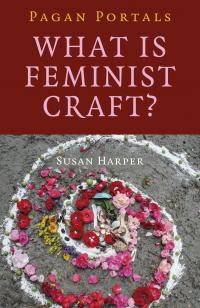

Lammas or Lughnasadh in the Wheel of the Year - By Lucya Starza
The start of harvest was a big celebration when people relied on each year’s crops for food to last through winter. The festival of the first fruits is often called Lammas in England. It was once the time for summer fairs where workers were hired to bring in the harvest, livestock was sold, and everyone had a good time. The word might come from the Christian Loaf Mass, in which loaves baked from the first grains were blessed. These days it is used for the Pagan Wheel of the Year festival on August 1, and is celebrated in Traditional Witchcraft. In Crone! - An Old Craft Witch's Year, Melusine Draco writes: “Lammas is a most important Old Craft festival… Originally it was held on 1st August, or about halfway between the Summer Solstice and Autumn Equinox.”
Some prefer to call the festival Lughnasadh, after the Irish God Lugh. Lughnasadh remembers the funeral Lugh held for his foster-mother, Tailtiu, who legends say died after clearing Ireland’s plains for agriculture.
Baking Bread for Lammas
A good way to celebrate the start of the grain harvest is to bake your own bread. Fresh bread is perfect to share at a Lammas ritual or just as a treat to honour the season. As well as enjoying the lovely loaf, sprinkle a few crumbs onto the ground outside and give thanks to nature for her bounty. I’m not giving a recipe here as there are many online, and of course in cookery books. I’d recommend Rachel Patterson’s A Kitchen Witch’s World of Magical Food.
Beer, Ale and John Barleycorn
Grain is also essential for brewing beer, and that’s something to celebrate too. John Barleycorn is a traditional folk song often sung at Lammas rites. It’s about a character who is the personification of barley, and shows the process grain goes through from harvest to raising a glass as a toast. The poem starts with the grain cut down, which many modern pagans think of as a symbolic sacrifice, but ends with its resurrection as beer.
The song can be acted as a ritual drama, but do be careful not to hurt anyone. I was once at a Lammas ritual in which the man playing the role of John Barleycorn ended up in a real roll after being put in a barrel that began to tumble down the hill we were on. The fellow was okay, but we made sure to we gave him plenty of ale to revive him fully! Here’s how the song ends:
"Well there's beer all in the barrel, and whisky in the glass,
But little old Sir John with his nut-brown bowl proved the strongest man at last."
Beer is traditionally shared at Lammas rites, along with bread. Raise a toast to John Barleycorn and any other deities you honour, then sprinkle a little as an outdoor libation to nature.
Corn Dollies
Corn dollies, sometimes called kern babies or corn mothers, are most associated with harvest time. They are made from stalks of wheat or other grain, and even straw or grasses, as a country craft. Nowadays they are often simply decorative objects, but there’s a lot of folklore associated with them. While in some traditions the first sheaf of wheat was baked into bread, in others it was made into a dolly which was burnt as a symbolic offering of the first of the harvest as thanks to the spirits of the fields.
Corn dollies are also made at the end of the harvest. According to legends, the spirit of the corn lives among the crop, but is made homeless. James Frazer wrote in The Golden Bough that it was often the very last sheaf of the harvest that was made into a corn dolly. It would have a hollow enclosure for the grain spirit to live in during the winter. In the spring, the corn dolly would be ploughed into the first furrow of the field, to return the spirit to the land.
Some corn dollies look like human-shaped dolls, but often they are more stylised like the ones in the photo. Another type of corn dolly is known as a countryman’s favour or a lover’s knot. They were often given as love tokens at harvest time, and are simpler to make. The very easiest is just a plait of grain stalks tied into a loop with a bit of ribbon. Corn dollies can be made with long, thick strands of grass from your garden or with craft straws if you don't have wheat or corn. Never pick crops from fields unless you have the farmer's permission.
In parts of Scotland and some Scandinavian countries, straw dogs known as “bikko” are made as booby prizes given to the last farmer to bring in their crops. The bikko is traditionally made from the last sheaf, or from straw, and secretly attached to the roof of the recipient’s house during the night. It is considered a sign of bad luck rather than favour.
Celebrate Your Achievements
Modern urban pagans might not have grain to harvest, but we can celebrate any veg or flowers we’ve grown in our gardens, and personal achievements. That might be exam results, business success, a lifestyle goal, or a creative project. Create an altar using things that are golden or yellow-coloured and place on it items that reflect anything you feel proud of or are grateful for. Light a candle and say words of thanks, then enjoy a feast of freshly baked bread or cakes with ale or fruit juice. Remember to put out some crumbs and a libation as an offering to the spirits of the land.
This is part of a series of posts I’m writing for the Moon Books Blog on the theme of the Wheel of the Year. My posts will be compiled and edited into a book: Pagan Portals – Wheel of the Year. Other books by Lucya Starza in the Pagan Portals series include Candle Magic, Guided Visualisations, Poppets and Magical Dolls, and Scrying. Lucya edited the community book Every Day Magic – A Pagan Book of Days.
Categories:
0 comments on this article






